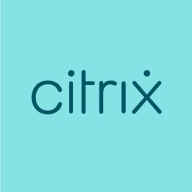

Find out in this report how the two Server Virtualization Software solutions compare in terms of features, pricing, service and support, easy of deployment, and ROI.
My clients generally maintain their Citrix infrastructure without shifting, suggesting stability and reliable operation as Citrix XenServer is fully established.
With OpenShift combined with IBM Cloud App integration, I can spin an integration server in a second as compared to traditional methods, which could take days or weeks.
Moving to OpenShift resulted in increased system stability and reduced downtime, which contributed to operational efficiency.
They do not provide adequate support for midsize businesses.
Since being acquired, Citrix's customer service has experienced delays in response time.
Red Hat's technical support is responsive and effective.
Red Hat's technical support is good, and I would rate it a nine out of ten.
I have been pretty happy in the past with getting support from Red Hat.
Familiarity with Linux can enhance its performance and usability.
Red Hat OpenShift scales excellently, with a rating of ten out of ten.
The platform has shown significant improvement with each new version, adding valuable features while making it easy to scale by adding or removing worker nodes and storage.
The on-demand provisioning of pods and auto-scaling, whether horizontal or vertical, is the best part.
It provides better performance yet requires more resources compared to vanilla Kubernetes.
I've had my cluster running for over four years.
It performs well under load, providing the desired output.
Although the product is technically competitive, it is not widely known or used due to poor marketing.
Citrix needs to improve the hypervisor, specifically in security and performance.
Learning OpenShift requires complex infrastructure, needing vCenter integration, more advanced answers, active directory, and more expensive hardware.
Integration with tools like Grafana and Prometheus is necessary for capturing logs.
We should aim to include VMware-like capabilities to be competitive, especially considering cost factors.
It is cheaper compared to its competitors.
The pricing and licensing policy of Citrix XenServer is not transparent and quite confusing.
Initially, licensing was per CPU, with a memory cap, but the price has doubled, making it difficult to justify for clients with smaller compute needs.
The cost of OpenShift is very high, particularly with the OpenShift Plus package, which includes many products and services.
Red Hat can improve on the pricing part by making it more flexible and possibly on the lower side.
It provides secure access to applications and resources, which is crucial for us and our clients.
It is user-friendly and easy to deploy, making it an attractive option.
Red Hat OpenShift stands out as a robust enterprise solution due to its superior support and documentation.
The concept of containers and scaling on demand is a feature I appreciate the most about Red Hat OpenShift.
It has features that enhance security, ease of deployment, and service exposure compared to Kubernetes.


Citrix XenServer is a virtualization platform used in industries such as banking, automotive, and data applications for cloud automation, server virtualization, and VDI scenarios. It supports infrastructure management, virtual machine hosting, and enterprise software deployment, reducing costs by migrating from other platforms.
As a virtualization tool, Citrix XenServer stands out for its ease of maintenance, support, scalability, and centralized management. Commonly deployed on-premises and in data centers, it provides real-time monitoring, live migration, and strong security features. With compatibility across many operating systems, users benefit from a Windows-based management interface that is easy to install and navigate. Integration capabilities with active directory, storage, and load balancing contribute to resource optimization and reliability.
What are the key features of Citrix XenServer?Implementation in banking, automotive, and data applications leverages Citrix XenServer's strengths in cloud automation and virtualization. Organizations manage resources, deploy services, and ensure stable operations within their infrastructure. The platform is used both on-premises and in data centers, aiding in areas such as cost reduction and maintenance efficiency.
Red Hat OpenShift offers a robust, scalable platform with strong security and automation, suitable for container orchestration, application deployment, and microservices architecture.
Designed to modernize applications by transitioning from legacy systems to cloud-native environments, Red Hat OpenShift provides powerful CI/CD integration and Kubernetes compatibility. Its security features, multi-cloud support, and source-to-image functionality enhance deployment flexibility. While the GUI offers user-friendly navigation, users benefit from its cloud-agnostic nature and efficient lifecycle management. However, improvements are needed in documentation, configuration complexity, and integration with third-party platforms. Pricing and high resource demands can also be challenging for wider adoption.
What are the key features of Red Hat OpenShift?Red Hat OpenShift is strategically implemented for diverse industries focusing on container orchestration and application modernization. Organizations leverage it for migrating applications to cloud-native environments and managing CI/CD pipelines. Its functionality facilitates efficient resource management and microservices architecture adoption, supporting enterprise-level DevOps practices. Users employ it across cloud and on-premises platforms to drive performance improvements.
We monitor all Server Virtualization Software reviews to prevent fraudulent reviews and keep review quality high. We do not post reviews by company employees or direct competitors. We validate each review for authenticity via cross-reference with LinkedIn, and personal follow-up with the reviewer when necessary.